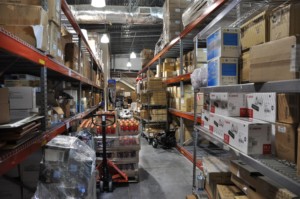 There are even more storage options. Continuing from my last post, I will show you some more options to store your material. This post is with much thanks to Juan Carlos Viela for the detailed suggestions!
There are even more storage options. Continuing from my last post, I will show you some more options to store your material. This post is with much thanks to Juan Carlos Viela for the detailed suggestions!
Vertical Lift
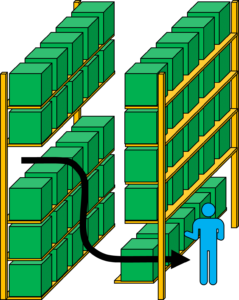 The first is a vertical lift, sometimes also called an Inlift. This is somewhat similar to a shelf, but with an automated adding-and-retrieving system that retrieves not only one part, but an entire level of a shelf. Often, an employee then picks the desired item from the presented tray of the shelf and then sends the tray back afterward.
The first is a vertical lift, sometimes also called an Inlift. This is somewhat similar to a shelf, but with an automated adding-and-retrieving system that retrieves not only one part, but an entire level of a shelf. Often, an employee then picks the desired item from the presented tray of the shelf and then sends the tray back afterward.
This is a commonly used solution for small parts. Obviously, it is less common with bulky parts, since you have to move all material on a level of the shelf. Heavy items would require a stronger and hence more expensive moving mechanism.
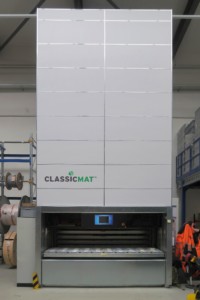 Here is an image of such a storage tower used at the maintenance and intervention center for the Gotthard Base Tunnel, the longest railway and deepest traffic tunnel in the world. To keep track of the locations and to reduce search time, the different slots in a tray are labeled and also given a barcode. Every time a part is added or removed, the corresponding tray slot has to be scanned. In my experience, it works *most* of the time, but be prepared to occasionally go through all shelves and search what you have missed.
Here is an image of such a storage tower used at the maintenance and intervention center for the Gotthard Base Tunnel, the longest railway and deepest traffic tunnel in the world. To keep track of the locations and to reduce search time, the different slots in a tray are labeled and also given a barcode. Every time a part is added or removed, the corresponding tray slot has to be scanned. In my experience, it works *most* of the time, but be prepared to occasionally go through all shelves and search what you have missed.
Carousel
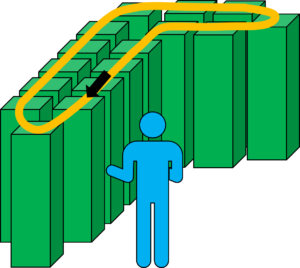 A less commonly used option is a carousel. The material moves around in a circular loop. This loop can be a true circle, a rounded square, or any other shape. The loop can be horizontal (more common) or vertical. The material can hang from the loop, or it can be placed on shelves attached to the loop.
A less commonly used option is a carousel. The material moves around in a circular loop. This loop can be a true circle, a rounded square, or any other shape. The loop can be horizontal (more common) or vertical. The material can hang from the loop, or it can be placed on shelves attached to the loop.
 Probably the easiest example is a spinner rack, a simple shelf that can rotate. You frequently find these in retail, often for books or postcards. To browse through, you simply rotate the shelf. Similar but slightly larger shelves are sometimes found in offices to store filing folders.
Probably the easiest example is a spinner rack, a simple shelf that can rotate. You frequently find these in retail, often for books or postcards. To browse through, you simply rotate the shelf. Similar but slightly larger shelves are sometimes found in offices to store filing folders.
The advantage is that it has the potential to use the storage space well. You do not need to keep internal space free for moving your items around. You only need to have an access slot somewhere where you can access the one part that is at this slot. It is also mechanically simple. Rather than a complex system of different powered axes like the vertical lift, you simply have a chain going round and a motor somewhere to power this chain. If you so will, it is a one-axis storage system.
The big disadvantage of this method is that you have to move ALL material if you want to access an item. Hence this usually does not work well for heavy or bulky items. Nevertheless, it is used not only in retail but also sometimes in industry. Below are two examples, a vertical carousel loop for tool storage at a milling machine, and a horizontal loop in a dry cleaners shop. It is also common in hospitals with medical supplies, which are also usually lightweight.
Drive-In, Drive-Through
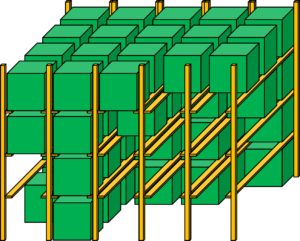 Another option is drive-in storage and drive-through storage. In this type of storage, there is no access path into the storage. Hence it allows for the highest density packing. However, it also means that accessing the material is cumbersome. Within one row it is recommended to have only one type of material, as otherwise the need to shift things around to access something in the back becomes prohibitive. Hence this is most often used for items that need to be stored long term (e.g., seasonal items), very similar items (one type per row), or if space is truly at a premium (e.g., cold storage).
Another option is drive-in storage and drive-through storage. In this type of storage, there is no access path into the storage. Hence it allows for the highest density packing. However, it also means that accessing the material is cumbersome. Within one row it is recommended to have only one type of material, as otherwise the need to shift things around to access something in the back becomes prohibitive. Hence this is most often used for items that need to be stored long term (e.g., seasonal items), very similar items (one type per row), or if space is truly at a premium (e.g., cold storage).
To add and retrieve material, a forklift (or similar) needs to drive directly into the storage system. This can be from one side (drive-in) or from both sides (drive-through). The image below illustrates drive-through storage with access from both sides. The principle is the same for drive-in, although you can access it only from one side. The forklift on the left wants to add material. He has to lift the material on the correct level, and then drive all the way into the shelf to set the pallet down. Afterward he has to back out again. Both driving in and out are preferably done without bumping into the shelf. A similar process in reverse happens for the removal of material.
You can easily see that there are some limitations in adding and removing items. The forklift on the left adds to the top row. He could also add to a row below, but then the added pallet would block access to the empty space on top. Similarly, the removing forklift could access the top three rows but cannot yet remove the item on the top row, since access is blocked by material on the rows below. Getting an item from the middle would require quite some shifting around.
Overall, drive-in storage must follow the Last-In-First-Out (LIFO) principle for one row of a level of the shelf, but with the additional complication that the material on other levels in the same row may block access, and also vice versa, other levels could be blocked by material on this level of this row. For drive-through storage, it would be the First-In-First-Out (FIFO) principle, again with the complication that material on other levels of the same row can block access, and also vice versa, other levels could be blocked by material on this level of this row. Overall, it is a bit tricky to have a good adding and removing sequence here.
Radio Shuttle Storage
An automated variant is called the radio shuttle. In this system, every level on every row has a small cart (a radio shuttle) that can lift and transport a pallet along its level and row. Hence, it can bring a pallet from the front deeper into the storage or return it. This radio shuttle can drive underneath other material, but of course only when it is empty. A pallet on the shuttle cannot move past another material on the same level of the row of the shelf. Yet, this system allows a strict LIFO (for one-sided access) or FIFO (for two-sided access) within the path of the radio shuttle. It can also automatically move all pallets to one side one by one to optimize storage space and reduce pickup times.
Rolling Rack and Push Back
Alternatively, you could also use gravity instead of a radio shuttle, and install a rolling rack, where you add material on one side and remove it from the other. The material will, in FIFO sequence, simply roll down the incline to the other side.
If you have access only from one side, you can still use gravity. This is called push-back storage. The forklift pushes the entire stack backward to make space for another pallet. Of course, here we have the not-so-hot LIFO principle, where the material in the back can get quite old. You would also need some sort of system that indicates to the forklift driver if there is space at the end of the rack; otherwise he will push the entire stack against the wall, potentially damaging the goods, the shelf, or even the wall.
Often, such a push-back system is built with roller similarly to a rolling rack. However, since it is LIFO, it can also be built with wheeled pallet supports within the rack. This may be a bit cheaper, since you need less rollers or wheels, making an inexpensive storage system even cheaper. Just make sure that no matter if you use rollers, pallet carts, push back, or a rolling rack, that your pallets don’t get stuck in the middle of a large rack 🙂 .
Autostore by Swisslog
Finally, there is an automated approach called Autostore by a company named Swisslog. The approach looks neat. Small robots drive around on top of your storage, and add/remove boxes from stacks of boxes. Naturally, a stack of boxes uses a LIFO principle, and to get a box at the bottom the robots have to do some shifting around. Less frequently used parts slowly settle to the bottom of the pile, while more frequently used ones end up being more towards the top. Conceptually this is very similar to the loading and unloading of container ships, except the boxes are much smaller with Autostore.
This system also has quite a good packing density, and also works well with unusual floor plans and obstructions like pillars (you just have a pillar where a stack of boxes would be). To improve performance you would simply add more robots on top. Below is a short video by Swisslog showing and explaining their Autostore.
These are even more options on how to store your material. Hopefully one of these methods can help you. Again many thanks to Juan Carlos Viela for the detailed suggestions! Now, go out, have a look at your inventory, and organize your industry!

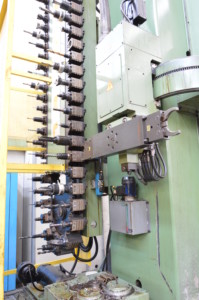

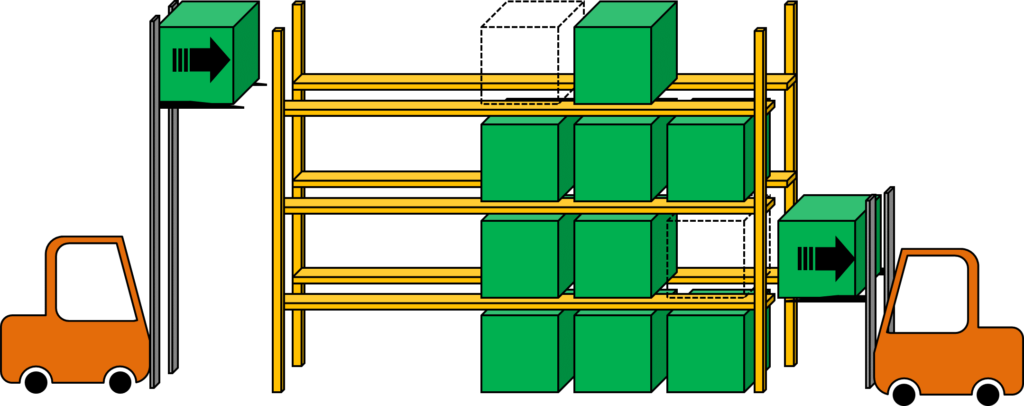
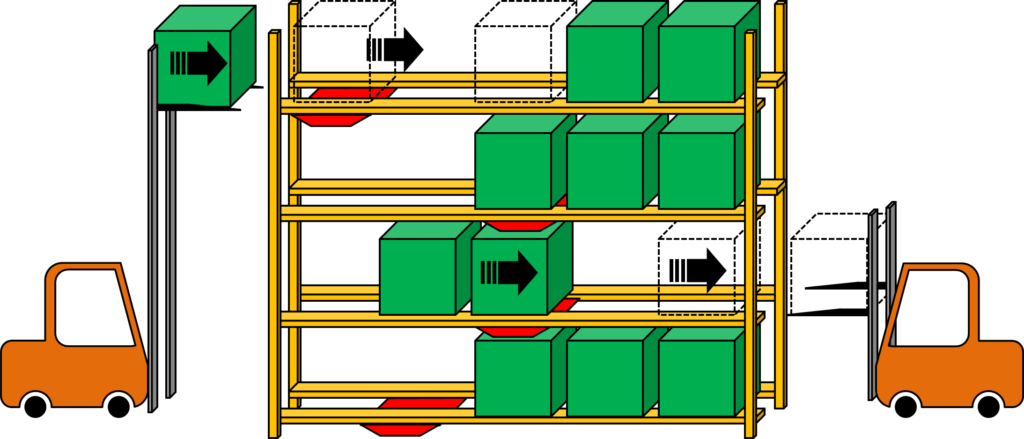
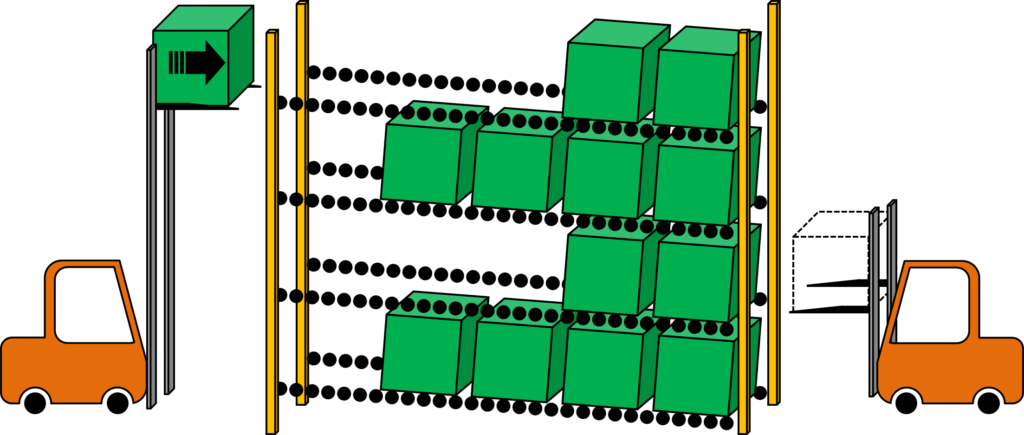
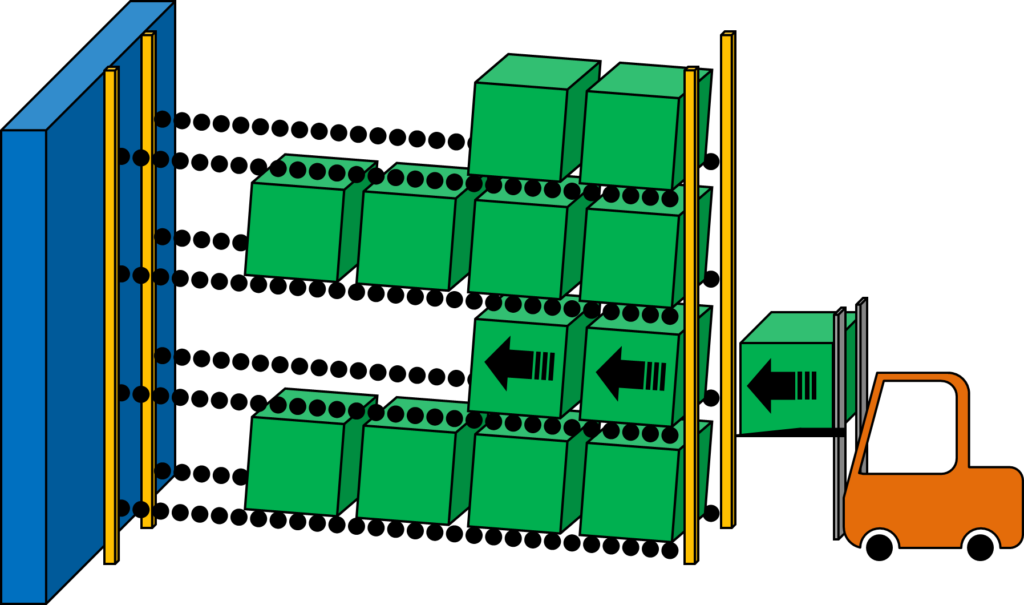
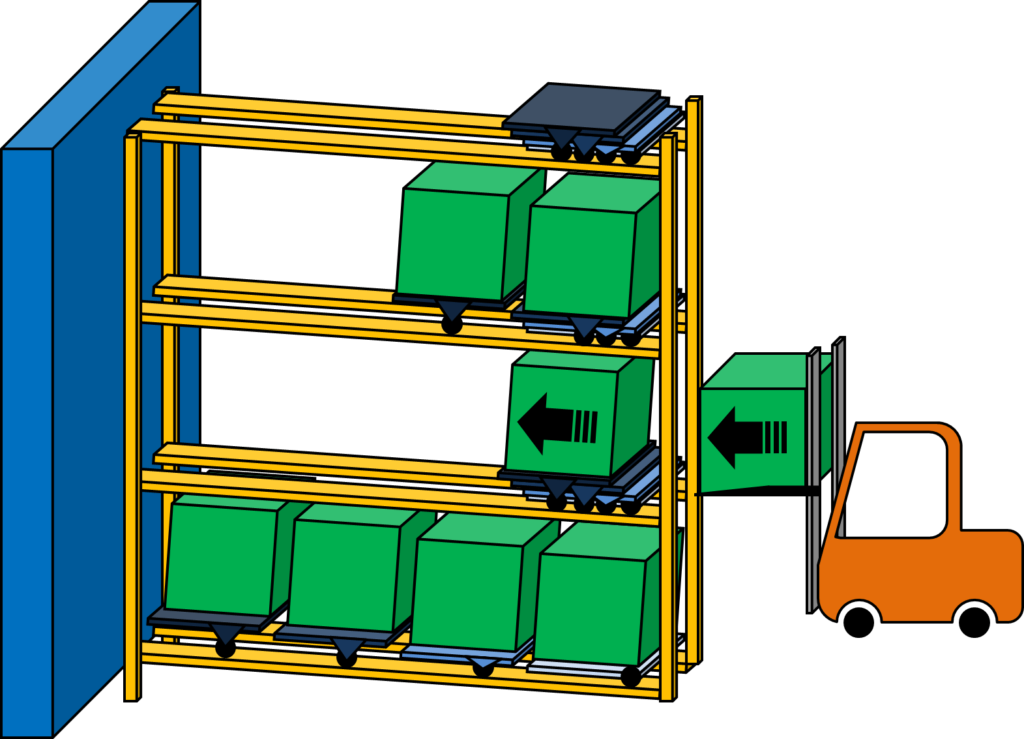
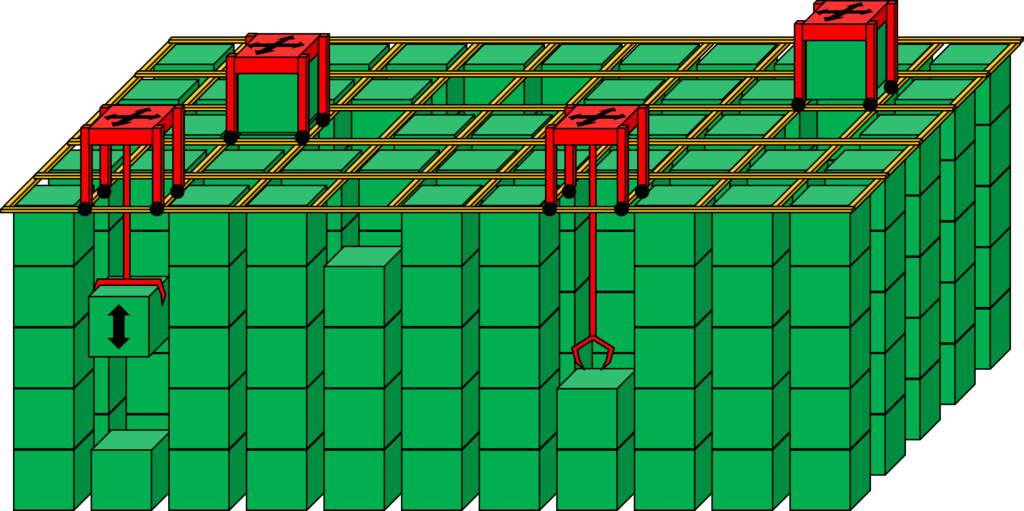

Thank you very much for mentioning.
Best regards
Juan: You are welcome. Thank you very much for suggesting these topics in the first place!